SAO Image Gallery
In this page, SAO students, alumni, instructors and thosw within the Centre for Astrophysics and Supercomputing at Swinburne University of Technology have shown some of their own images of astronomical objects, taken using an array of telescopes, conventional cameras or CCD cameras.Submissions are currently closed until we can better manage the volume of images.
Click on preview image to get full-sized image
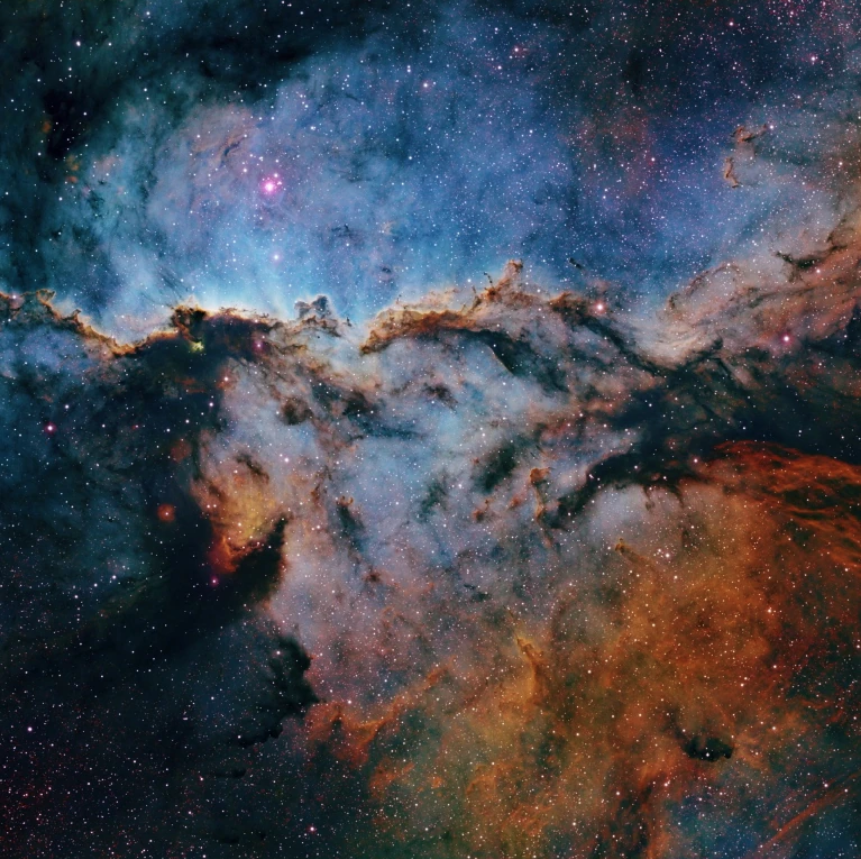 NGC 6188 (aka The Fighting Dragons of Ara) by SAO student Suavi Lipinski. |
As reported by the ABC, this image was projected onto the William Jolly Bridge in Brisbane as a part of "Stargazing Live, 2018". |
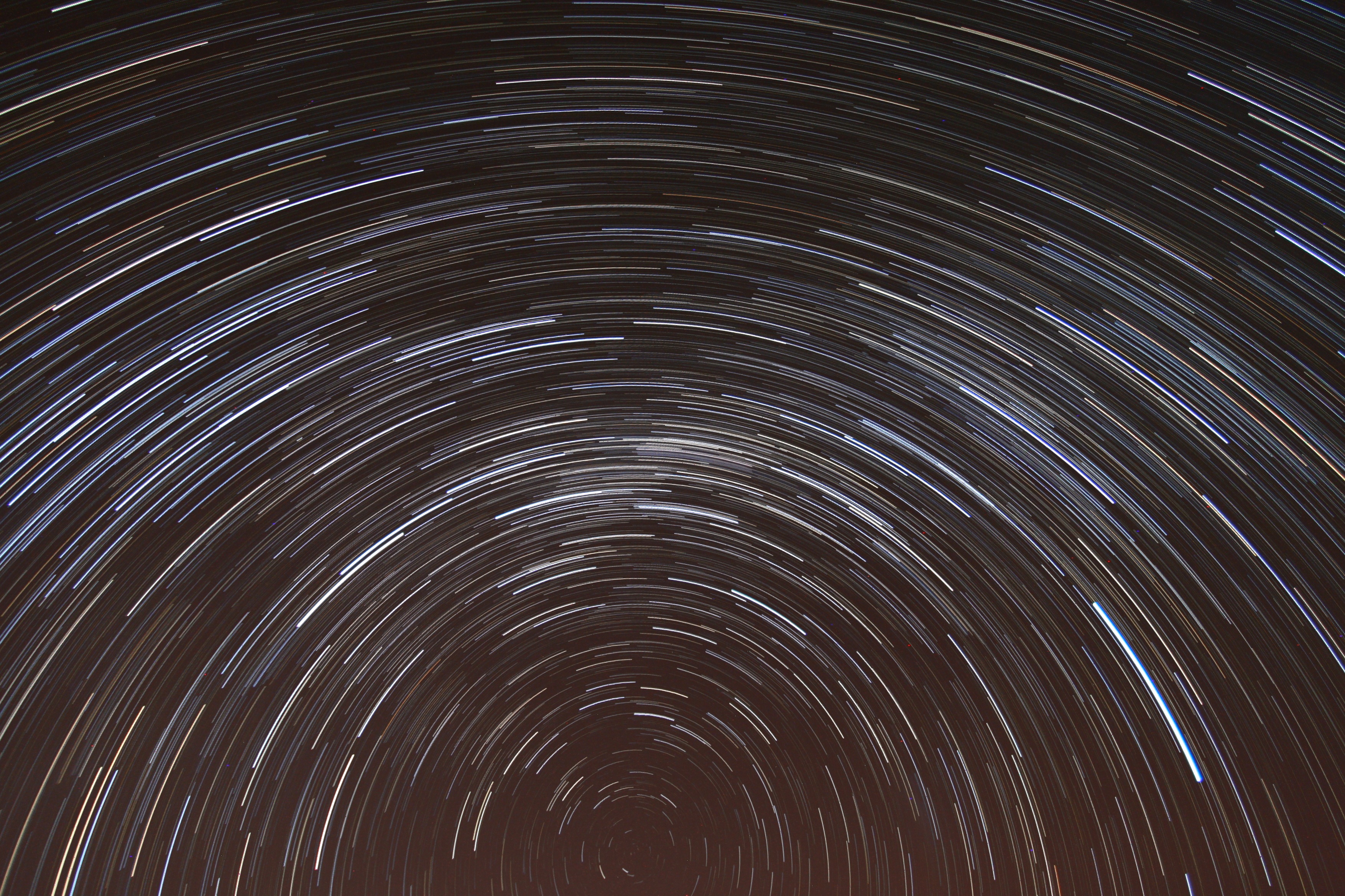 Star trails by Sharon Harnett |
"This image was composed of 177 images taken from 1123pm on 30 March 2012 to 1239am 31 March 2012. The image was taken looking to the south from my backyard in suburban Canberra. The images were taken with a Canon DSLR 400D, 10mm lens, at ISO 800, f3.5, with a 24 second exposure. I then stacked the 177 images using StarStax to form startrails." |
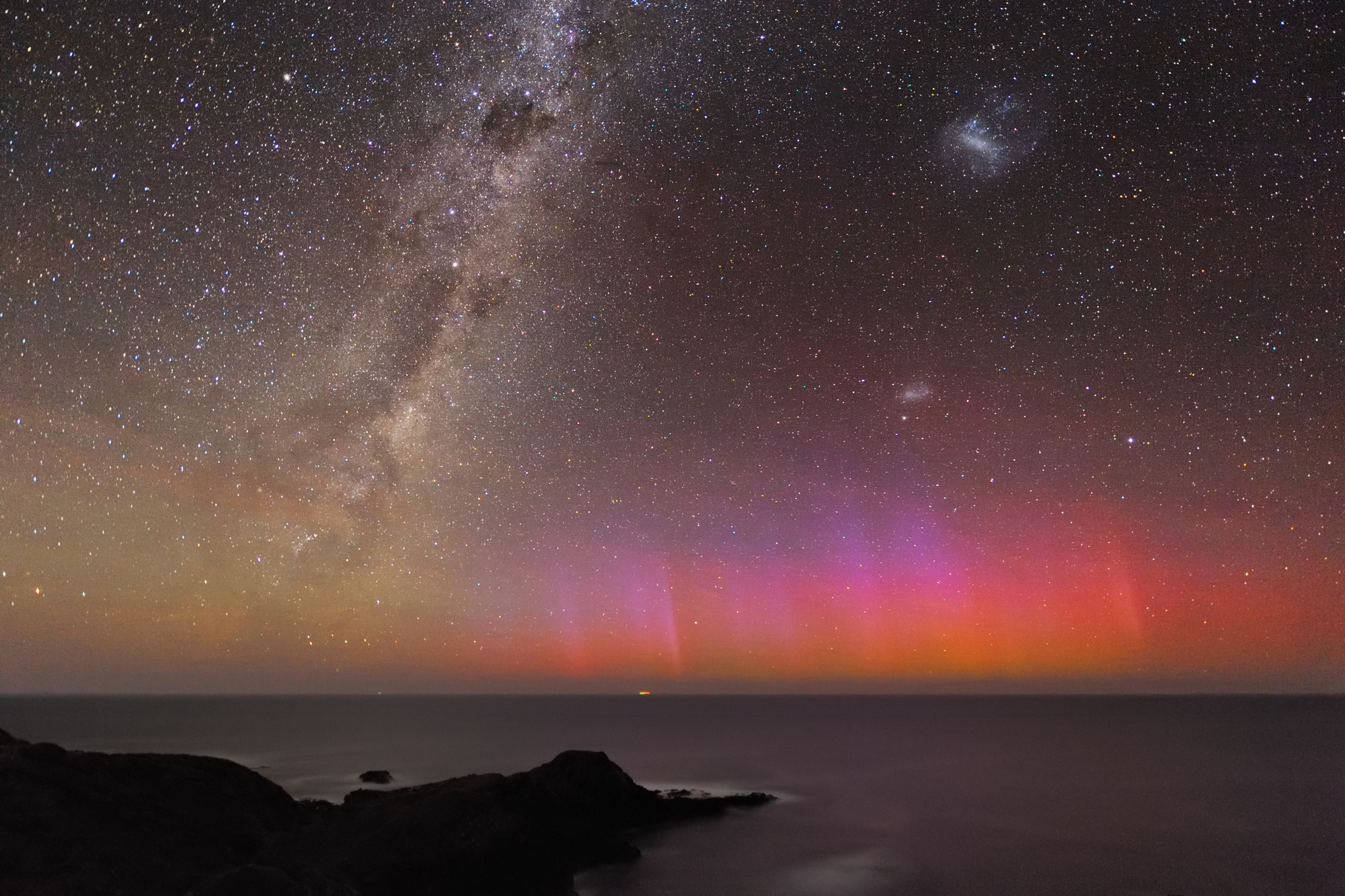 Aurora Australis by Alex Cherney |
"After chasing it for more than two years, I was finally rewarded with two displays of Aurora Australis within a week, visible from the southern tip of Mornington peninsula, not far from Melbourne. The nights were warm an clear and the Moon was not in the sky either - I could not have asked for better conditions." (Alex's gorgeous image also made it to APOD, and you can view the animated sequence on vimeo.) |
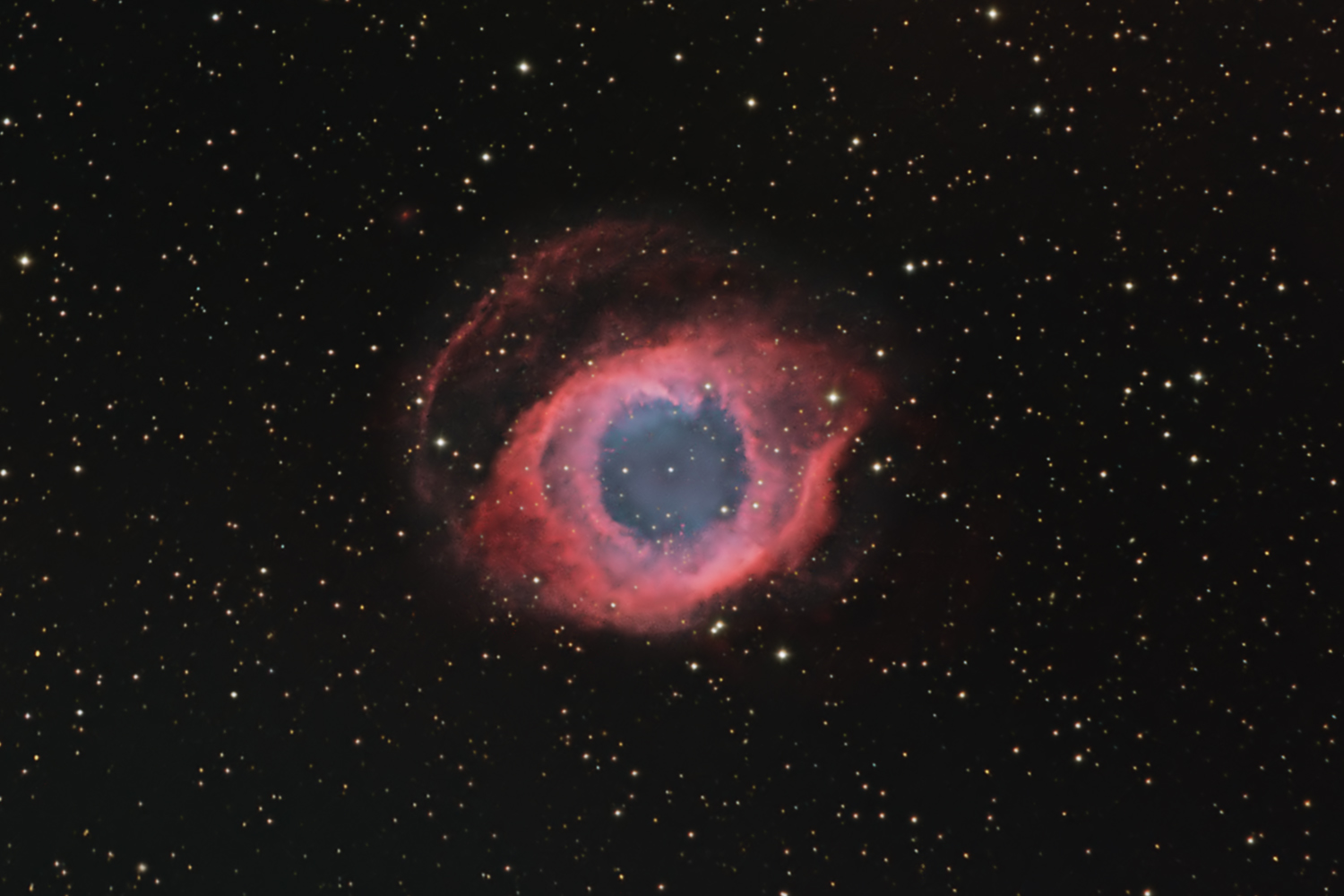 NGC7293 by Lynn van Rooijen-McCullough |
"NGC 7293 (Helix Nebula): a difficult target, lying just above the horizon, even in France. Taken with C11, Hyperstar 3 @ f/2, Starlight Xpress H18, Astronomik Ha & S[II] filters & Sloan g-r-i photometric filters. Not the usual combination, but I was using the Sloan filters for other work and decided to continue with them. 5.5 hours & 68 images total." |
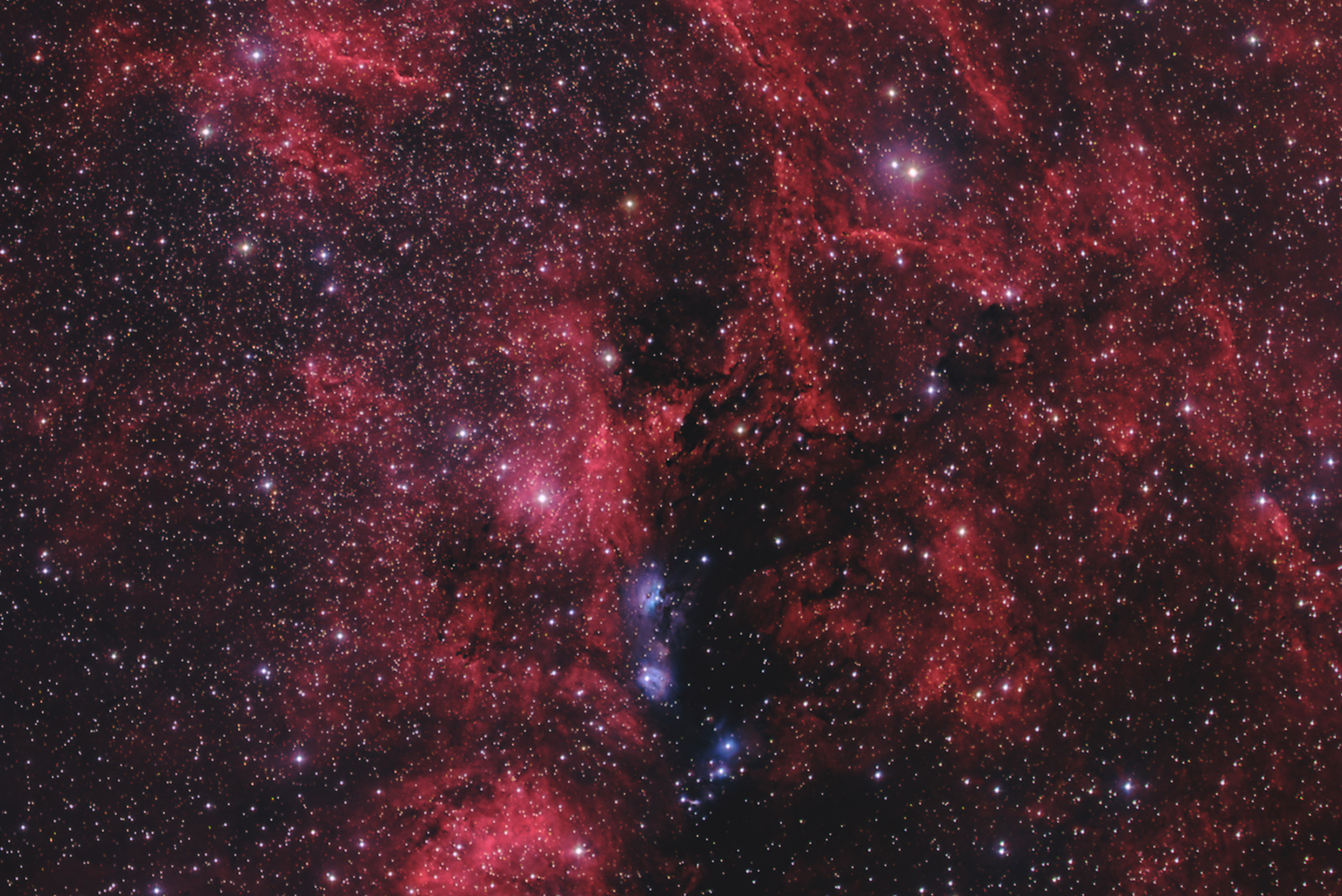 NGC6914 by Lynn van Rooijen-McCullough |
"NGC 6914, an area of emission & reflection nebulae near the IC 1318 region. The illuminating stars of the nebula belong to the Cygnus OB2 association. Taken with C11, Hyperstar 3 @ f/2, Starlight Xpress H18, Astronomik Ha & S[II] filters & Sloan g-r-i photometric filters. About 4 hours & 52 images total." |
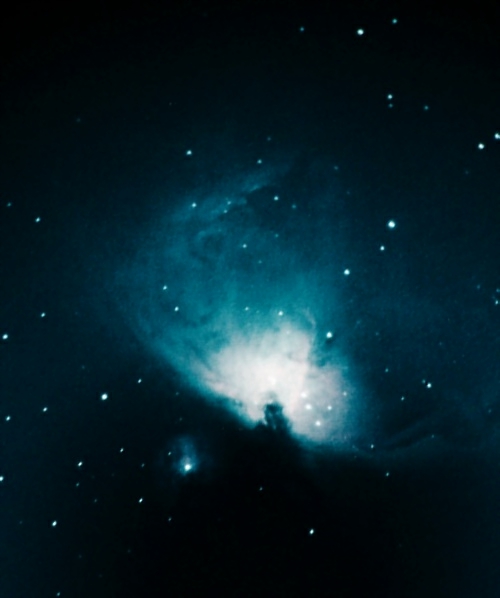 Orion Nebula by Michael Pachomski |
"Orion Nebula, M42 and M43, imaged with a Meade Classic LX-200 10-inch Schmidt-Cassegrain telescope. Using a Lumicon deep sky filter and a Canon T2i DSLR camera with mixed ISO's of 800, 1600, 3200 and 6400 taken at 20 second exposures. Images were stacked in Deep Sky Stacker with post processing in GIMP for a total exposure of 14 minutes. Photos taken with on the University of New Hampshire Observatory grounds, Durham, New Hampshire, USA." |
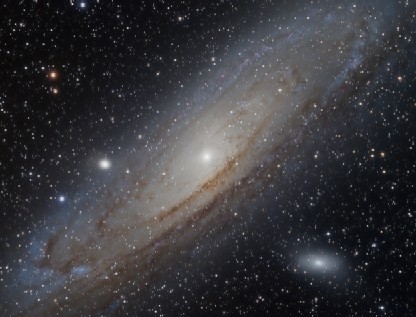 M31 by Marek Cichanski |
"SBIG ST-8300M monochrome camera. The camera uses the same Kodak 8300 CCD chip as the QSI camera. I shot my unbinned R, G, and B images through a set of Orion 2" color filters, mounted in an Orion filter wheel. It was a dark-moon weekend at the end of September, 2011 - the occasion for this year's California Star Party (`Calstar')." |
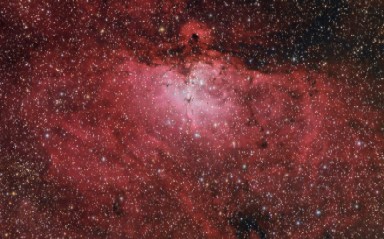 Eagle nebula by Marek Cichanski |
"This image is the product of a week of data acquisition at the end of July/beginning of August, 2011. A group of friends and I make a yearly pilgrimage to Lassen Volcanic National Park, northern CA, USA. The image consists of a few hours each of: R, G, B, and H-alpha filters using an Orion ED80 semi-apo refractor, 80mm, f/7.5. I borrowed a friend's QSI 583 monochrome CCD camera with a built-in LRGBHa filter wheel. I was using a pretty simple `Sirius' mount, also from Orion, and one of their guiding setups - a `StarShoot' autoguider camera. Acquisition, autoguiding, and dithering were done with MaximDL. I did my image calibration and processing in Pixinsight." |
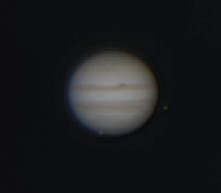
Jupiter by Jim Katsifolis |
17 Oct 2011: "If you look closely at the attached image you can see Ganymede passing in front of Jupiter at bottom left, and Io just to the right of Jupiter. I used a Thorlabs DCC 1645C USB camera at the primary focus of a Meade 8" SCT, and took 2000 frames at 21 frames/sec which was processed with Registax 5.1." |
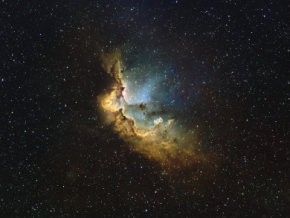
NGC 7380 by Lynn van Rooijen-McCullough |
NGC7380, a.k.a. "The Wizard". Emission nebula, cluster and star-forming region in Cepheus. 10.5 hours, taken with 12nm SII, Ha & OIII Astronomik narrowband filters, Starlight Xpress H18 & Hyperstar 3 @ f/2. Combined in the Hubble Palette (SII=red, Ha=green, OIII=blue). Considerable artistic license - following Hubble techniques - when balancing emissions, to bring out the much weaker OIII and SII emissions compared to the dominant Ha. (this image was also published in the July issue of Astronomy Now) |
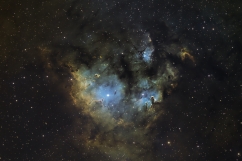
NGC 7822 by Lynn van Rooijen-McCullough |
NGC7822-Sh2-171. Emission nebula, cluster and star-forming region in Cepheus. 14+ hours, taken with 12nm Astronomik SII, Ha & OIII narrowband filters, Starlight Xpress H18 & Hyperstar 3 @ f/2. Combined in the Hubble Palette (SII=red, Ha=green, OIII=blue). Considerable artistic license - following Hubble techniques - when balancing emissions, to bring out the much weaker OIII and SII emissions compared to the dominant Ha. |
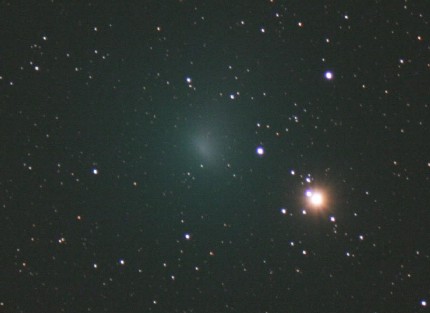
Comet 103P-Hartley 2 by John Gianforte |
Comet 103P-Hartley 2 Canon 20Da ISO 1600 prime focus Meade ED127 - 20 min. integration. |
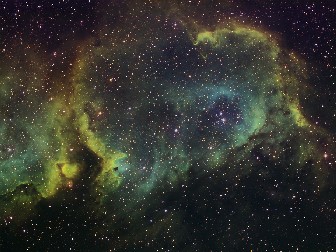
IC 1848 by Lynn van Rooijen-McCullough |
IC 1848, (Soul Nebula, Sharpless 2-199, LBN 667) is an emission nebulae in Cassiopeia. Image of 10.5 hrs integration in [SII], Halpha and [OIII] using HST palette - 11 inch Celestron, Starlight Xpress, H18 and Hyperstar 3. |
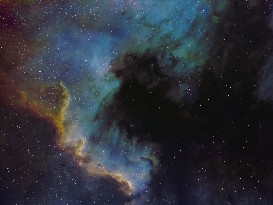
NGC 7000 by Lynn van Rooijen-McCullough |
NGC 7000, (North America Nebula, Caldwell 20) is an emission nebula in the constellation Cygnus. Image of 10 hrs integration in of [SII], Halpha and [OIII] using HST palette - 11 inch Celestron Nexstar GPS, Starlight Xpress H18 monochrome CCD and Hyperstar 3. |
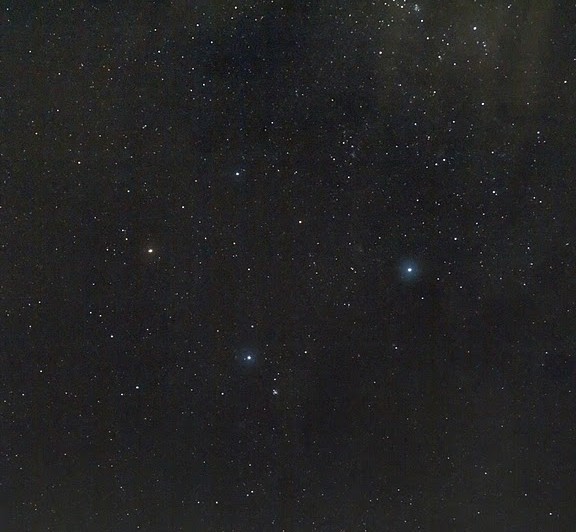
Southern Cross by Pekka Rautajoki |
The Southern Cross - Canon EOS 20Da & 24-105mm @ 55mm, 14x6s, no tracking. NGC4755 "Jewel Box" southeast of Be Crux; NGC3766 near the top right corner of the photo. |
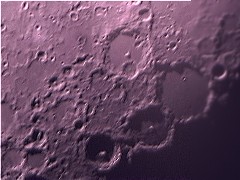
Ptolemaeus walled plain; by Jim Katsifolis |
26 October, 2009: Meade LXD-55 8-inch Schmidt-Cassegrain, Philips ToUcam at prime focus. Processed with Registax 5. From far right of centre is the small crater Herschel (43km wide and 2.77km deep). To its left next to it is Ptolemaeus, a walled plain 158km wide. To the left of Ptolemaeus are two craters, Alphonsus (121km wide and 2.7km deep) and Arzachel (100km wide and 3.6km deep). |
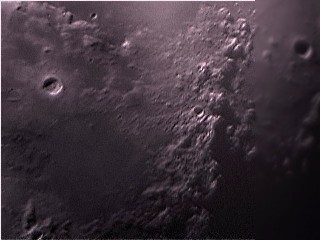
Mare Vaporum; by Jim Katsifolis |
26 October, 2009: Meade LXD-55 8-inch Schmidt-Cassegrain, Philips ToUcam at prime focus. Processed with Registax 5. Mare Vaporum (lower left of centre), with crater Manilius (41km wide and 3.1km deep) on the left side and crater Wallace (27km wide) to the right of the mountain range. The top area of the visible mountain range features the following named mountains/peaks - Mons Huygens (height 5.4km) , Mons Ampere (3km high) and Mons Wolff (3.5km high). |
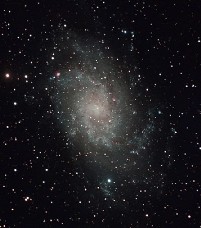
Messier 33; by Lynn van Rooijen-McCullough |
Hyperstar 3 lens and Starlight Xpress SXV-25C camera at prime focus (in place of the secondary mirror), making my 11” Celestron a very fast imager with a wide FOV. Messier 33, 86 minutes exposure. |
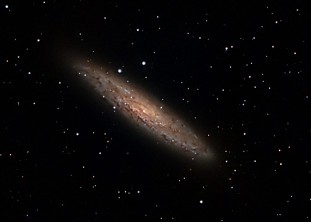
NGC 253; by Lynn van Rooijen-McCullough |
Hyperstar 3 lens and Starlight Xpress SXV-25C camera at prime focus (in place of the secondary mirror), making my 11” Celestron a very fast imager with a wide FOV. Sculptor Galaxy, 40 minutes exposure under lousy conditions – lots of water vapor and dust in the air, and the galaxy was only about 20 degrees above the horizon. |
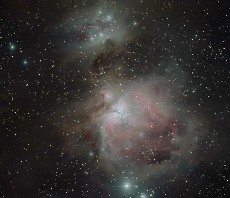
M42, M43 & NGC 1977; by Lynn van Rooijen-McCullough |
Hyperstar 3 lens and Starlight Xpress SXV-25C camera at prime focus (in place of the secondary mirror), making my 11” Celestron a very fast imager with a wide FOV. A composite of two series, one from southern France and one from the back yard, total 1 hour 15 minutes. |
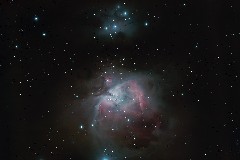
M42, M43 & NGC 1977 (Orion & Running Man Nebula); by Lynn van Rooijen-McCullough |
December 29, 2008: M42, M43 & NGC 1977 (Orion & Running Man Nebula): More than 60 minutes with the Hyperstar @ f2 on 11" Celestron GPS with wedge, Canon 20Da, Lumicon Deep Sky filter. Guided with Atik 16IC. Various exposures from 15" @ ISO 200 (Trapezium area) to 240" @ ISO 1600 to capture detail in all areas without over exposing. Photo's per exposure-duration stacked in Maxim, layered and processed in Photoshop. |
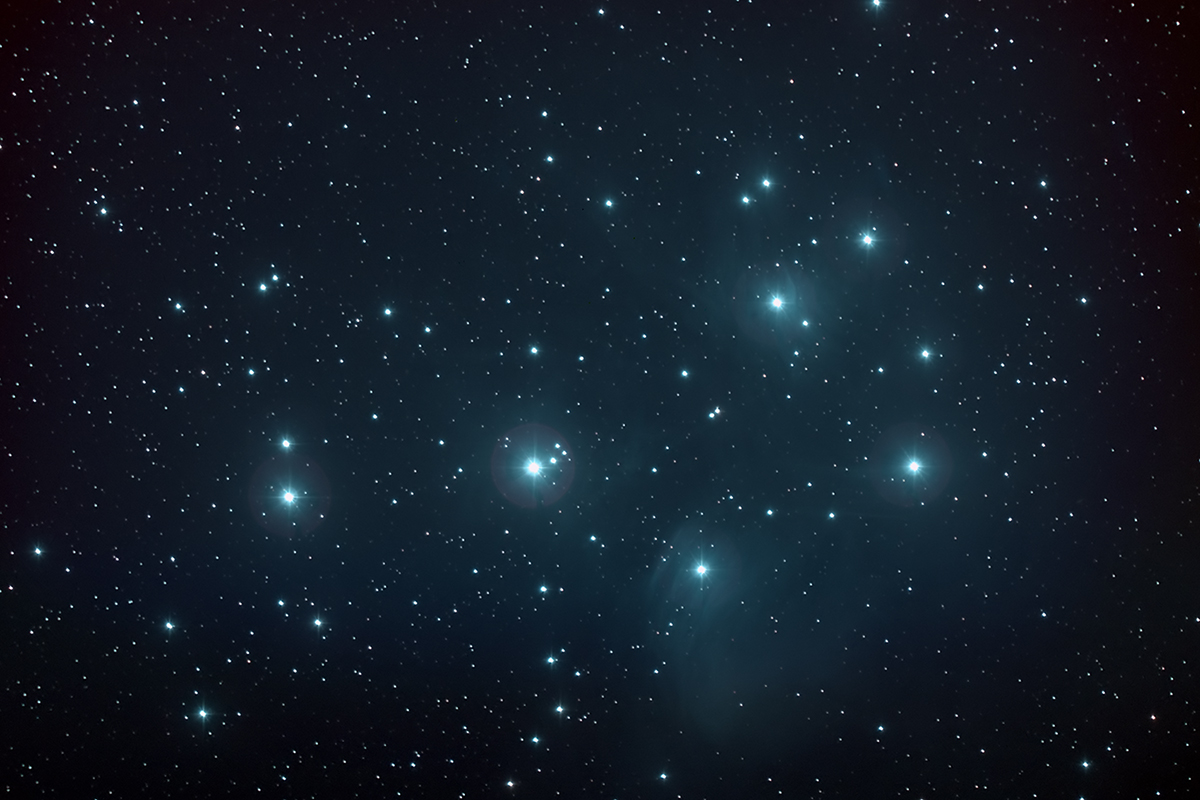
M45 (Pleiades); by Lynn van Rooijen-McCullough |
December 29, 2008: M45 (Pleiades): Photo's taken in the back yard during 2 very cold nights, with Celestron Nexstar GPS on wedge, Hyperstar 3 & Canon 20Da, Lumicon Deep Sky filter; approximately 30 exposures per object from 30s to 300s. Calibrated & stacked in MaximDSLR, processed with Photoshop. M45: 2460s @ ISO 1600. |
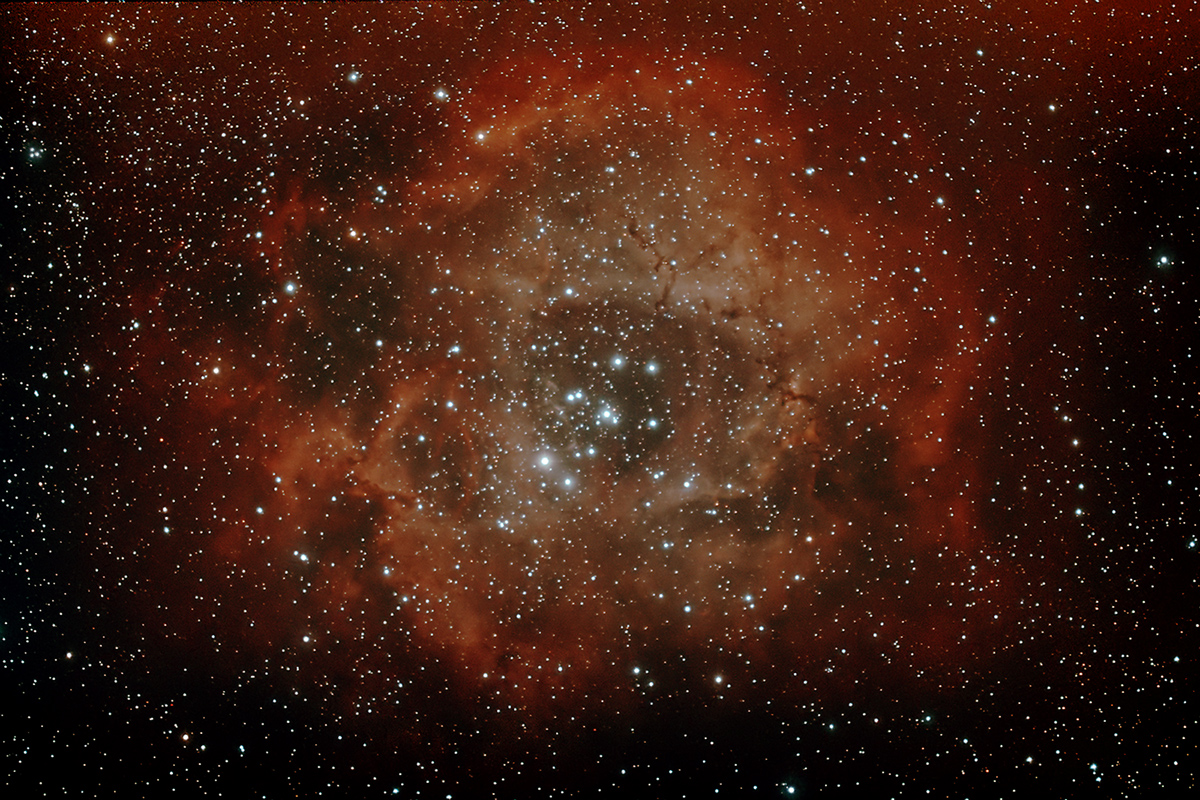
NGC 2237 (Rosette Nebula); by Lynn van Rooijen-McCullough |
December 29, 2008: NGC 2237 (Rosette Nebula): Photo's taken in the back yard during 2 very cold nights, with Celestron Nexstar GPS on wedge, Hyperstar 3 & Canon 20Da, Lumicon Deep Sky filter; approximately 30 exposures per object from 30s to 300s. Calibrated & stacked in MaximDSLR, processed with Photoshop. NGC 2237: 3300s @ ISO 1600. |
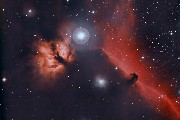
NGC 2024, Barnard 33 & IC 432, Flame & Horsehead Nebula, Alnitak & reflection nebula NGC 2023; by Lynn van Rooijen-McCullough |
January 30, 2009: Taken with Celestron 11" & Hyperstar @ f2, Lumicon Deep Sky filter, 39 exposures of 60, 90 & 120 seconds, total 62 minutes. Calibrated & stacked in MaximDL, further processing in Photoshop. |
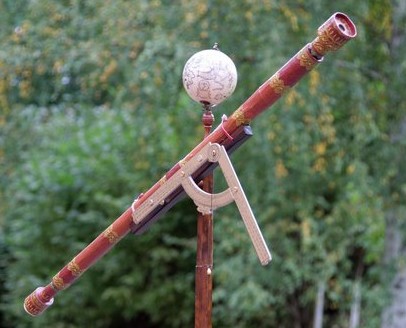
Replica Galileo Galilei telescope; by Pekka Rautajoki |
A prototype of the Galileo replica, made from cardboard and paper. The printed paper skin of the replica has leather texture and correct ornamentation, so it looks very much like the final replica made from wood staves and leather covering, with ornamentation mostly hand-painted in gold. |
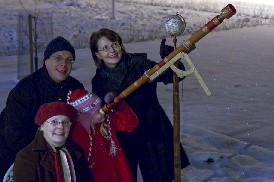
Replica Galileo Galilei telescope; by Pekka Rautajoki |
Observing session during a cold night in snowy Finland with a replica Galileo Galilei telescope. The replica is made from wood staves and covered with leather. The builder of the replica, Pekka Rautajoki, stands in the background with his wife Saila Rantajääskö in front. Anni observes through the scope, and her mother Johanna points at the stellar globe in the background. |
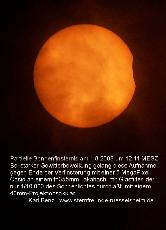
10 August 2008: Partial Solar Eclipse; by Karl Benz |
See image for details! |
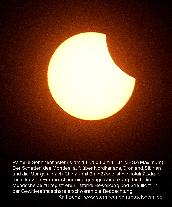
10 August 2008: Partial Solar Eclipse; by Karl Benz |
See image for details! |
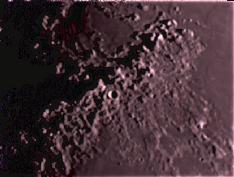
Lunar Apennines; by John Gianforte |
Image was taken from the University of New Hampshire Observatory in Durham, New Hampshire, USA on February 24-2007 through a Celestron C14 using a Meade DSI imager. 200 images were stacked using Registax. |
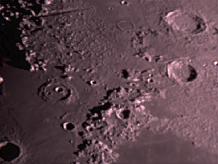
Alpine Valley (Vallis Alpes); by John Gianforte |
Taken Feb 24, 2007 through the University of New Hampshire C14 telescope, with a Meade DSI imager-images were stacked in Registax. |
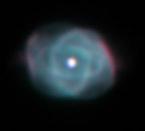
NGC 6543 The Cats Eye nebula; by John Gianforte |
The image was taken through the 82 inch Otto Struve telescope with a Canon 20Da DSLR and the exposure time was 30 seconds, at 800 ISO, and was taken on July 23, 2006 at 05:02 UT. I was assisted by Marc Wetzel in taking this image. |

Full Moon; by Tim Hunter |
It contains 50 images taken on December 23rd, 2007 with a Lumenera web cam on a Meade 12-inch LX200 telescope. Imaged at f/10 instead of f/20 as usual and got away with it as the individual images and features are relatively small on the mosaic. |
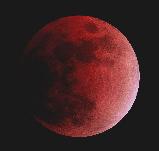
Moon in eclipse; by John S. Gianforte |
Taken on Feb. 20, 2008 through a Meade 127ED APO refractor with a Canon 20Da, during a special public observing session at the University of New Hampshire Observatory. |
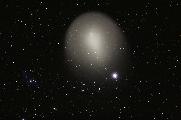
Comet Holmes - November 18, 2007; by Tim Hunter |
This image was taken with a 60 sec exposure using a Canon 20da camera at ISO 800 through a Meade LXD55 8-inch f/4 telescope. Mirfak [mag 1.8 (v)] is the bright star near the comet. |
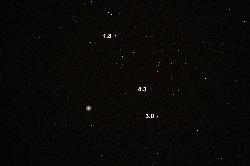
Comet Holmes - November 9, 2007; by Tim Hunter |
Taken 135 mm f/3.5 lens on a Nikon D100 camera using a 5 second exposure and ISO 800. The numbers next to the bright stars represent their Mag (v) as listed in MegaStar 5.0. Notice how much the comet has grown in size since my images of October 24, 2007. |
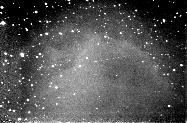
Time series of Minor Planet 28736; by David Higgins |
I was undertaking time series images of Minor Planet 28736 when I noticed it was traversing a stellar void. I co-added 44 images in the series resulting in the equivalent of an approx 3 hr exposure of this region of space revealing some detail in what is classified a dark nebula (LBN 19, LDN 188 or LDN 175 - not sure which one since the star charts put all 3 overlapping each other). The brightest pixel of the brightest part of the nebular measures magnitude 20. The image is 25' x 18'). The 'dotted' line is my target Minor Planet. |
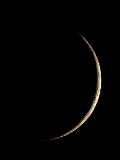
Phases of Moon; by Tim Hunter |
This is an animated gif of the Moon phases from day one through day 27. Individual images of the Moon were taken daily in the Spring of 2005 with a Meade LPI camera on a Celestron 2.4 inch f/10 telescope. The images were collected over approximately two Lunar cycles. |
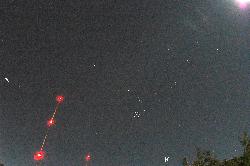
Comet Holmes Wide Angle; by Tim Hunter |
Taken on Wednesday evening October 24, 2007 at 9:00 pm local time with a 15 mm f/4 lens on a Nikon D100 digital camera with a 10 second exposure at ISO 800. Cassiopeia is the upside down chair above and left of center. The green fuzz ball in the upper right corner is the Andromeda Galaxy (M31) and the nearly full Moon causes an unwelcome glow coming from the upper right hand corner. Perseus is just below center, and the comet is circled. Note the Pleiades near the lower right hand corner. Two radio towers are partially seen in the lower left hand corner. |
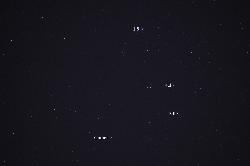
Comet Holmes 50mm; by Tim Hunter |
Taken on Wednesday evening October 24, 2007 at 9:15 pm local time. It zooms in on Perseus which is partially shown just to the right of center. The image orientation is the same as above. This is a 10 second exposure with a 50 mm f/2.8 lens on a Nikon D100 digital camera at ISO 800. The numbers next to the bright stars represent their Mag (v) as listed in MegaStar 5.0. The comet is currently an easy naked eye sight. It wouldn't be such a big deal as it has no tail except that it is a gorgeous sight through a telescope, and it suddenly brightened a millionfold. |
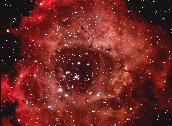
Rosette Nebula (NGC 2237); by Kevin Sweeney |
Taken on 28/2/2007 from Ireland using a Starlight Xpress SXV-H9 CCD camera attached to an ED80 refractor, piggybacked on a 10" Meade LX200. HaRGB format with exposures of 8x10min for the H alpha and 3x10min each for the colour. Processed with MaxIm DL and AstroArt |
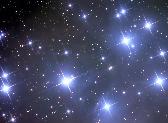
M45/Pleiades; by Kevin Sweeney |
Taken from Ireland on 5/3/2007 using the same setup as above. LRGB format with exposures of 10x5 mins for the luminance and 3x5 mins each for the colour. Image acquisition and processing using AstroArt with final filtering using Neatimage. The diffraction spikes were produced (for effect) by two pieces of thread taped across the open end of the telescope. |
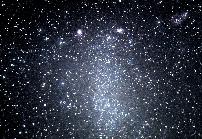
NGC 6822; by Bob Sackett |
Taken at Kitt Peak using a 16" Meade SCT and an SBIG ST-8 camera with appropriate filters for color. Note the Bubble Nebula if you look real hard. Processed with Maxim DL and Photoshop. |
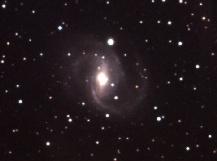
NGC 6951; by Bob Sackett |
Taken at Kitt Peak using a 16" Meade SCT and an SBIG ST-8 camera with appropriate filters for color. NGC6951, a barred (SBbc) spiral Seyfert galaxy in Capricornus. Processed with Maxim DL and Photoshop. |
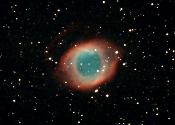
Helix Nebula; by Tim Jensen |
Taken from Baton Rouge, LA using a modified (IR filter removed) Canon Digital Rebel XT camera mounted on an Orion ED80 refractor piggybacked on a 10" Meade LX200 GPS. Over 5 hours of 2 minute exposures were taken over two weeks to create this image. Processed using ImagesPlus and Photoshop CS. |
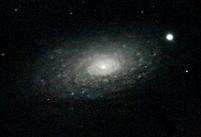
M 63; by Tim Jensen |
Taken at prime focus of 10" Meade LX200GPS using an unmodified Canon Rebel XT. 90 one minute exposures were combined using ImagesPlus and Photoshop. |
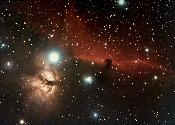
Horsehead and Flame Nebula; by Tim Jensen |
Taken from Baton Rouge, LA using a modified (IR filter removed) Canon Digital Rebel XT camera mounted on an Orion ED80 refractor piggybacked on a 10" Meade LX200 GPS. A total of 3 hours of 3 minute exposures were taken and combined using ImagesPlus and Photoshop CS. |
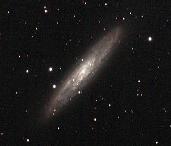
NGC 253; by Tim Jensen |
Taken from Baton Rouge, LA using a modified (IR filter removed) Canon Digital Rebel XT camera mounted on an Orion ED80 refractor piggybacked on a 10" Meade LX200GPS. A total of 3 hours of 3 minute exposures were taken and combined using ImagesPlus and Photoshop CS. |
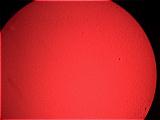
Transit of Mercury (8 November, 2006); by Jim Katsifolis |
Here are a couple of images I took early this morning (around 7:30am) of the transit of Mercury across the Sun. I used a CCD webcam on a Coronado Solar scope with H-alpha filter. Images touched up with Registax 3. See if you can pick out Mercury in the images before looking at the pdf... |
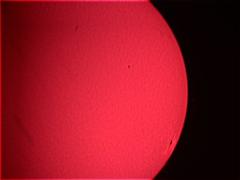
Transit of Mercury (8 November, 2006); by Jim Katsifolis |
Here is Jim's pdf file explaining the transit and his images (above), Mercurytransit2006.pdf |
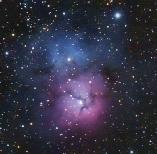
Messier 20 (NGC 6514; Trifid Nebula) ; by Tim Jensen |
Canon XT DSLR camera (unmodified), Orion ED80 telescope piggyback mounted on 10" LX200GPS. Location: Baton Rouge, LA Date: Sept 20, 2006 30 1 minute images captured at ISO 800. Images were dark, flat and bias corrected then average combined with ImagesPlus software. DDP stretch using ImagesPlus. Cropped to final size and colour balanced using Photoshop CS. Sky gradient removed using GradientXterminator. Comment: "Light pollution forced short exposures, but I was surprised to see so much detail with such a small aperture telescope". |
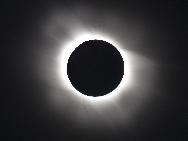
Total Solar Eclipse; by Leland Wehland |
Taken March 29, 2006 at Salum, Egypt using a 400 mm lens, 1.4 x teleconverter, and a Nikon D70 camera. This picture was taken during totality. The corona is visible and you can see the curvature at the north and south magnetic poles of the sun. Comment: "We were about 2 miles from the Libyan border and had traveled since midnight to arrive in time". |
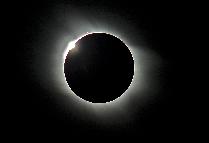
Prior to Totality; Leland Wehland |
Just prior to totality - Taken March 29th, 2006 at Salum, Egypt using a 400 mm lens, 1.4 x teleconverter and a Nikon D70 camera. Comment: "You can see a prominence at the top left of the picture". |
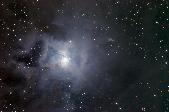
Iris Nebula; by Ricky Murphy |
Iris Nebula, NGC 7023. It was taken with two different telescopes; a 12" SCT and a 20" RC using the STL-11000 CCD camera. The image is an LRGB with an exposure of 120 x 60 x 36 x 72 in minutes. |
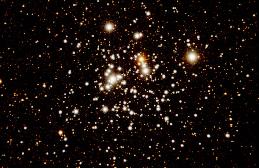
Jewel Box; by Peter Starr |
Taken from at Tenby Observatory, near Coonabarabran, NSW, 12/2/06. Telescope: Meade 14" LX200 GPS Camera: SBig ST8 Filters: B,V,R Processed with Maxim DL. |
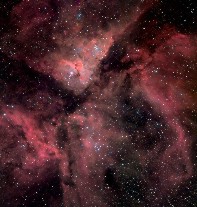
NGC 3372 - Eta Carinae Nebula; by Andrew Mattingly |
LRGB (5x60s:3x30s:3x30s:3x50s) 5 x 3 mosaic using 12" Meade SCT at f/5 and SBIG ST-8 camera binned 2x2. BATC-9 filter (48nm bandpass, including H-alpha line) used for luminance layer. |
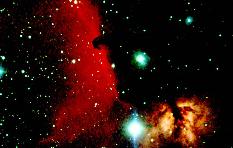
Horsehead Nebula and the Flame Nebula; by Peter Starr |
Date: 28/1/06 Place: Tenby Observatory, Coonabarabran. Telescope: Orion ED80 piggy backed on a Meade LX200 14" Camera: SBig ST8 Filters: H alpha, V, B. Processed with Maxim DL |
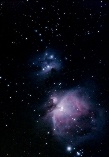
M42 and M43; by Tim Jensen |
Taken from Baton Rouge, LA using an Orion 80ED telescope piggybacked on a 10" LX200GPS. Photographed using a Canon 10D DSLR. Multiple exposures of 30 seconds, 1 and 2 minutes were combined using Images Plus and Photoshop. The Trapezium region of M42 was created from the shorter exposures and layered into the longer exposures using Photoshop to preserve the core detail. Total exposure time 10 minutes. |
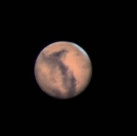
Mars; by Tim Jensen |
Taken from Baton Rouge, LA on 2 Nov 2005 using a ToUcam Pro attached to a 10" F10 LX200GPS and a 3x TeleVue Barlow. Approximately 2500 frames of an AVI were captured and stacked using RegiStax. Final processing done using Photoshop. |
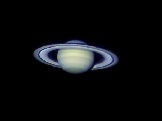
Saturn; by Tim Jensen |
Taken from Baton Rouge, LA on 17 Oct 2005 using a ToUcam Pro attached to a 10" F10 LX200GPS and a 3x TeleVue Barlow. Approximately 1200 frames of an AVI were captured and stacked using RegiStax. Final processing done using Photoshop. The northern hemisphere is now clearly visible above the rings. |
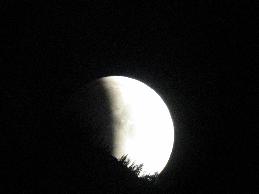
Moon eclipse; by Dennis Larcombe |
October 27, 2004. One is of the moon rising over the mountains where I live in Kaslo, British Columbia, Canada. It was already partially eclipsed as it came over the mountain. This was taken by hand holding a Canon Powershot 1S IS over the eyepiece of my 8 inch Dobsonian. The focal ratio was f 5.6 for 1/30 of a second. |
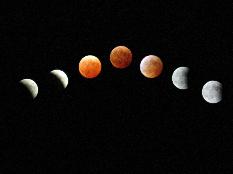
Moon eclipse montage; by Dennis Larcombe |
October 27, 2004. Collage of images made using the same camera (as above) at 10X optical zoom (focal length 58 mm) and various exposures. The images were then assembled with a program for the Mac called Graphic Converter. |
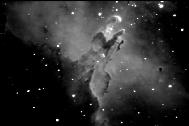
Eagle Nebula, Messier 16; by Donn Starkey |
Located in Serpens just north of the constellation Sagittarius, it is about 7000 ly from Earth and is a bright emission nebula. The three central columns are each several light years in length and are composed of hydrogen gas, creating a star forming region. This image was taken on August 21, 2005 and is the median average of 9 x 10 minute images taken in Ha [Hydrogen Alpha band]. The only image processing is a gamma stretch. The telescope is a 0.41m Ritchey-Chretien and the camera is an SBIG ST-10XME. |
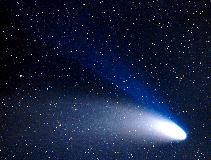
Comet Hale-Bopp; by Rob Jones |
Taken March, 1997 on Kodak PPF 400 speed print film. A piggybacked Nikon F5 with 200mm lens at f/2.8 was used. The exposure was 10 minutes in duration. The image was manually guided with a 12" cassegrain. |
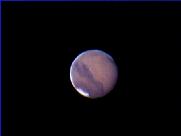
Mars; by Tim Jensen |
Taken August 16, 2003 from Baton Rouge, Louisiana using a Vesta Pro web cam attached to a Meade 10” LX200GPS SCT via a 2x Barlow. A 650 frame AVI was captured and combined using RegiStax software and Photoshop. |
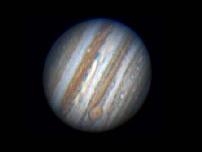
Jupiter; by Tim Jensen |
Taken April 9, 2005 from Baton Rouge, Louisiana using a ToUCam web cam attached to a Meade 10” LX200GPS SCT via a 3x Barlow. 2000 frames were captured and stacked using RegiStax with final processing using Photoshop. |
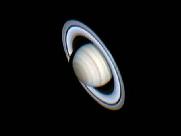
Saturn; by Tim Jensen |
Taken March 23, 2005 from Baton Rouge, Louisiana using a ToUCam web cam attached to a Meade 10” LX200GPS SCT via a 3x Barlow. 2000 frames were captured and stacked using RegiStax with final processing using Photoshop. Note, there is a hint of the C Ring visible! |
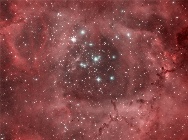
(Inner) Rosette Nebula (NGC 2244); by Andrew Mattingly |
Mosaic of DSS2 Red and Blue plates combined in Photoshop. |
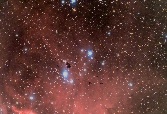
Bok Globules in IC 2944; by Andrew Mattingly |
LRGB image 5x60s:5x30s:5x30s:5x50s using 12" SCT at f/5 and SBIG ST-8 camera binned 2x2. |
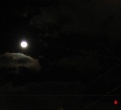
Jupiter, The Moon and the Red Star of the Kremlin; by Pekka Rautajoki |
The picture was taken with Canon Powershot A80 camera, exposure 1/4s at F3.5 (19:25 UT on May 26th). |
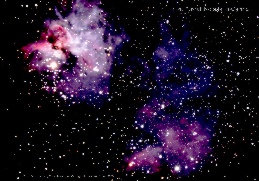
Eta Carina Nebula; by Peter Starr |
Picture taken with canon 300D digital camera, Meade LX200, 14" using a focal reducer F/6.3. 35 x 30 second exposures iso 1600 stacked with Maxim DL. Taken from Starr Observatory, near Coonabarabran, New South Wales, 26-2-05 on a full moon night. |

Lunar eclipse of October 28th, 2004; by Eduardo Manuel Alvarez |
A combination of eleven single photos in Adobe Photoshop 6.0 after being digitized. Each lunar frame has the original surface colours as they appeared in the corresponding printed images. The sequence started at right and ended at left, as it actually happened observed from my southern sky. The used technique was piggyback, the film was Kodak Gold ISO 100, the lens was 500-mm at f/8, and the exposure times were respectively 1/2000, 1/1000, 1/1000, 1/250, 15, 8, 8, 1/500, 1/250, 1/1000 & 1/2000 seconds. Finally, I added the UT time for each shot. |
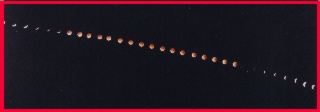
Lunar eclipse of October 28th, 2004; by Eduardo Manuel Alvarez |
This picture was taken in a single frame containing 31 shots at five-minute intervals (although not all the intervals were exactly five-minutes long, as the slight differences in separation of the lunar disk betrays). The sequence started at right and ended at left, as it actually happened observed from my southern sky. The technique used was a fixed camera on tripod, the film was Kodak Ultra ISO 400, the lens was a 50-mm, and the aperture diaphragm was set at f/8 for the first shots, varying the exposure time from 1/500 to 1/15 second, then at f/4 for the following 17 shots (the totality part) varying the exposure from 4 to 2 to 1 second and back again, and the last six shots again at f/8, from 1/15 to 1/250 second. |
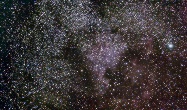
NGC 7000 (North America Nebula in Cygnus); by Tim Jensen |
A composite of 9 images taken using a Canon 10D DSLR camera and 70-300mm zoom lens at 300mm. Each individual image is a composite of 7 x 3 minute exposures combined using ImagesPlus software. A total of 63 images were taken and combined. Darks, Flats, and bias images were applied and brightness, gamma and colours corrected in Photoshop. Mosaic image created using RegiStar software. |
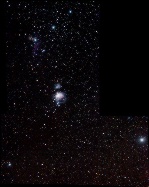
Orion (Messier 42); by Tim Jensen |
A composite of 5 images taken using a Canon 10D digital SLR camera and 70-300mm zoom lens at 200mm. Each individual image is a composite of 10 x 1 minute exposures that were combined using ImagesPlus software. A total of 50 images were taken. Dark fields, Flat fields, and bias frames were also applied. The 5 images were then combined into one wide field image mosaic using RegiStar software. |
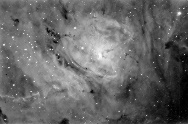
Lagoon Nebula (M8) in Hydrogen-alpha; by Andrew Mattingly |
A stack of 60 x 1-minute exposures through a 12" SCT at f/5 to a SBIG ST-8XE camera, binned 2x2 (image scale = 2.14 arcseconds/pixel). Taken at Grove Creek Observatory, NSW, Australia. |
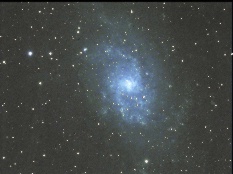
M33 (NGC598) The Pinwheel Galaxy in Triangulum; by Dick Adduci |
M33 (NGC598) The Pinwheel Galaxy in Triangulum. Camera: SXV-H9C Telescope: 95mm Brandon @ F/7.0. Exposure: 60 minute integration. Galaxy Size: 71x42 arcminutes. Mag: 5.7 Distance: 2.3 m light years. |
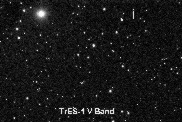 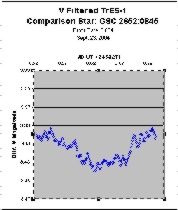
Transit of the exosolar planet TrES-1: by Donn Starkey (left: image of star; right: graph showing transit) |
V band photometry of the transit of the exosolar planet TrES-1 and an image of the program star. The following data was extracted: Ingress Time: 2473271.547 JD, Central Transit Time: 2473271.647 JD, Egress Time: 2473271.747 JD [extrapolated] using an 16" Ritchey-Chretien telescope and an ST-10XME camera. 205 images were taken over a 5 hour period to produce the photometric data. The data shown in the graph is a five data point running average of the raw photometric data. The raw image data was reduced using AIP4Win photometric software. |
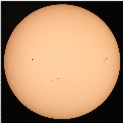
The Sun: by David Hughes |
This image of the sun and sunspot groups 0661, 0662, 0663, 0664 and 0665 was taken on 23 Aug 04 from Darwin NT, Australia. The telescope was a Celestron C10NGT 10" f/4.7 fitted with a JMB Type A full aperture solar filter. The image is an eyepiece projection through a televue 25mm Plossl giving 48x magnification and was taken with an Olympus Camedia C-350 digital camera using a homemade mount. |
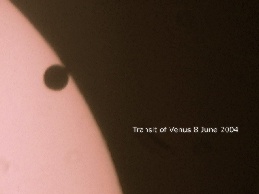
Transit of Venus - Second Contact: by Sheri Barrington |
Meade LX90 f/10 focal reduced to f/6.3, a white light filter made of Baader Solar Filter Film and a SACIV CCD Camera with 0.5s exposure. It has been extracted from an avi video of the ingress using K3CCD Tools. Taken Weymouth, Dorset UK. Date: 8th June, 2004. |
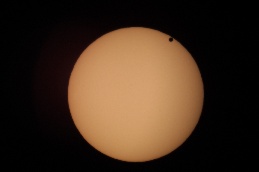
Transit of Venus - Second Contact: by Emil Lenc |
The images were taken on a hillside near Whittlesea, Melbourne, Australia. The telescope was a Meade LX90 8" f/10 with a Meade f/6.3 focal reducer and a Thousand Oaks Neutral Density 5 filter. The image was taken with a Canon EOS-D30 digital SLR with a 1/60 s exposure (ISO 200). Date: 8th June, 2004. |
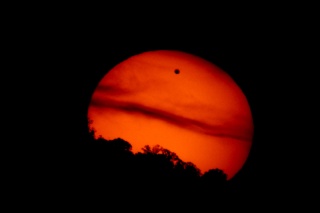
Transit of Venus - Sunset: by Emil Lenc |
Details as above except 0.6s exposure (ISO 400). |
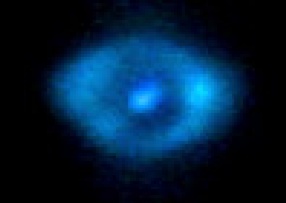
NGC 3242: The 'Ghost of Jupiter' Planetary Nebula: by Peter Starr |
Canon EOS 300D SLR digital camera and Meade 14 inch LX200GPS Scmidt-Cassegrain Telescope. Taken from Castle Hill NSW on 30/4/2004. ISO 400, shutter speed 20. |
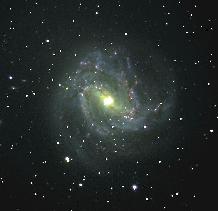
NGC5236 (M83) in Centaurus: by Andrew Mattingly |
L:R:G:B 25:10:10:16 minute exposures (RGB binned 2x2) using SBIG ST-8XE CCD, guided by SBIG AO-7 at 5Hz, through Meade 12" LX200 at f/6.3 taken at Grove Creek Observatory, Trunkey, NSW, Australia. |
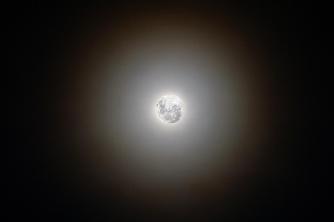
Lunar Halo: by Andrew Mattingly |
Composite of two shots of the Full Moon through thin high-level cloud, 8 hours before the total lunar eclipse of 5th May, 2004. Shots taken using a Canon EOS D60 digital SLR, f=120mm, f/5.6, ISO 400, camera-selected exposure duration (one shot overexposed by two stops to reveal halo, the other underexposed by two stops to reveal lunar detail). |
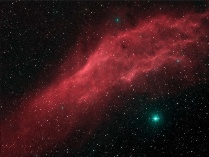
California Nebula (NGC1499): by Andrew Mattingly |
An image of the California Nebula (NGC1499) extracted from the Second Digitized Sky Survey (DSS2). The image has been coloured by assigning red to a mosaic of DSS2 Red images and Cyan (to produce white stars) to a mosaic of DSS2 Blue images. The mosaic of DSS2 Red images was reused as a luminance layer. The image covers an area of 2.5 x 2 degrees of sky. |
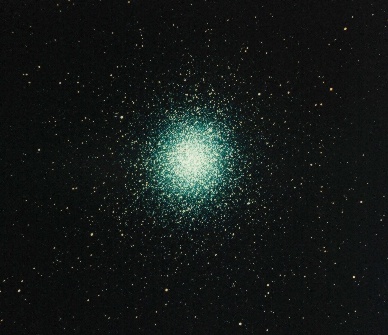
NGC 5139: by Trevor Barry |
A prime focus image taken in early Feb 2004 on Kodak Max 800 and is a five minute exposure. The scanned image was unsharp masked in Photoshop. |
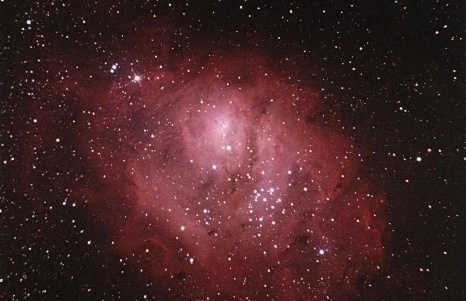
Messier 8: by Trevor Barry |
A prime focus image taken in 1996 on Kodak Royal Gold 1000, is a ten minute exposure and the scanned image was treated with an unsharp mask in Photoshop. |
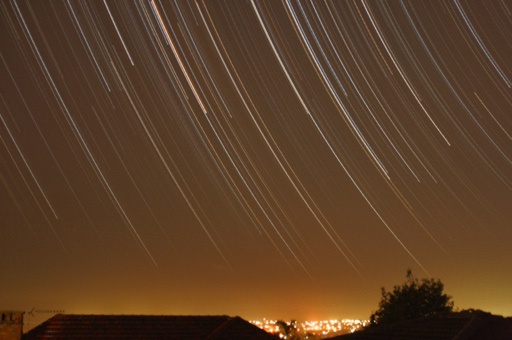 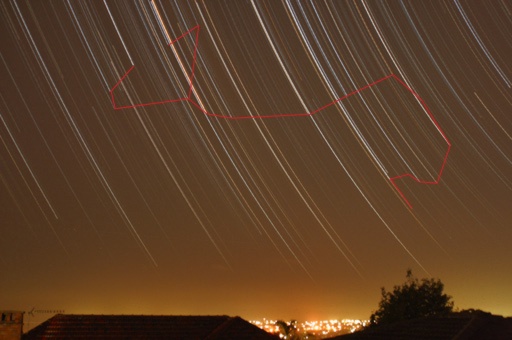
Scorpius over Sydney: by Andrew Mattingly (left: original; right: with overlay) |
Scorpius fleeing the light pollution of Sydney. Stack of 96 x 2-minute exposures using Canon EOS D60 digital camera with 28mm lens at f/3.5, ISO speed 200, medium (smoothed) resolution. See Sky & Telescope, March 2004 issue for details of the technique used. No tuning of brightness, colour, contrast, etc has been performed. |
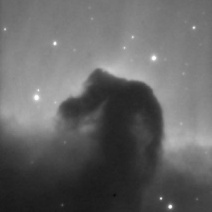
Horsehead Nebula: by Donn Starkey |
Date taken: Feb. 14, 2004. The Horse Head Nebula in Orion. Taken using a 14" SCT at f/11. ST10XME camera. Total exposure time: 3x20 minutes. Processed for kernel and FFT filtering via Maxim/DL. |
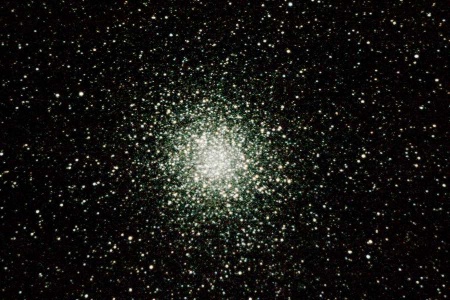
M22: by Richard Heggie |
Date taken: 2 August 2003 27/9/03. M22 Globular Cluster: Canon 10D Camera 3072x2048 at Prime Focus - Meade LX200GPS 300 mm Telescope at f/10 7 dark frames median averaged in ImagesPlus for calibration 6 x 30 sec Images ISO 8000 - Addition - Digital Development - Cropped - Images Plus |
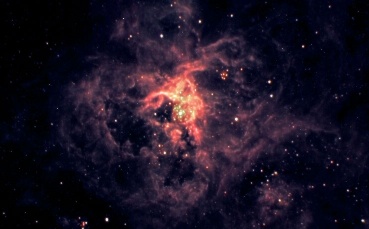
NGC2070 - Tarantula Nebula: by Andrew Mattingly |
Date taken: 27/9/03. Equipment: Meade LX200 10" f/4.67 (using Meade focal reducer), SBIG ST-7XE CCD with CFW-8 filter wheel. Exposures: LRGB: L (Hydrogen alpha) 5 x 360sec, R: 2 x 200sec, G: 2x200sec, B:2 x 320 sec all unbinned. Processing: Aligned and stacked using Registar v1.0, mid-range brighten of L, R, G & B and Gaussian blur of RGB using CCDSoft v5, Sharpening of L and colour adjustments in Photoshop v7. |

Pluto: by Mike Murphy |
Image data: Celestron C-11 @f/5; 1 minute exposures; SBIG ST-8E; Original images are about 30 arcmin wide x 20 arcmin high; plate scale 2.41 arcsec /pixel. Telescope/camera control/image processing – TheSky/CCDSoft (Software Bisque). |
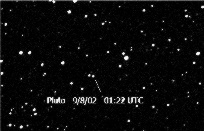
|
|
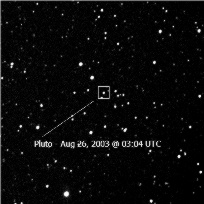
|
|
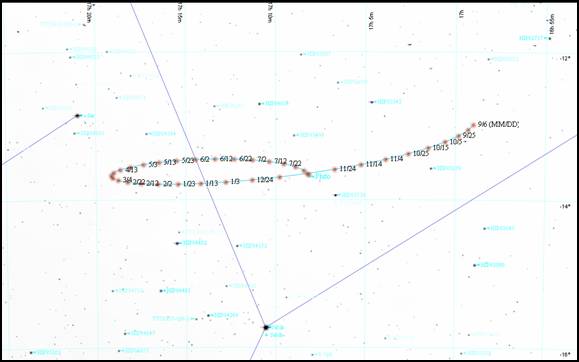
Orbit: Sep. 2002 to Aug. 2003 |
Orbit data: Diagram was made with Starry Night Pro 4.05 and is 7 degrees wide; Ophiuchus; Sep. 6, 2002 on far right, Aug 25, 2003 in middle at end of loop. Net movement 2 arcmin 21 arcseconds. |
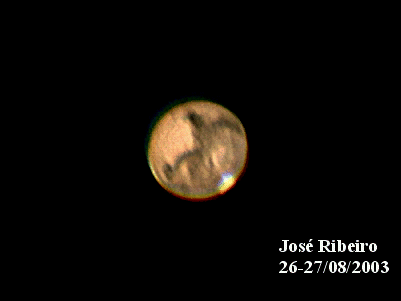
Movie of Mars at opposition: by Jose Ribeiro Left click to the Quicktime .mov file (58Kb) |
Date taken: 26/27 Aug. 2003. The images were taken with a Newtonian 8" at f/24 in an eq. mount, using a Philips ToUCam. The raw images were processed with Registax, Iris (for the luminance) and Corel. |
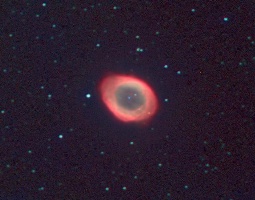
Messier 57: by Donn Starkey |
Date taken: July 19, 2003. This image of the Ring Nebula is a quad-color composite image using Johnson-Cousins R, B and V filters, an Halpha filter and a luminescence [black and white] layer. A C-14 telescope was used, operating at f/11. An SBIG ST10XME CCD camera was used at 2x2 binning. The total exposure time for all of the color layers was just over 4 hours. The image stacking was accomplished using MIRA software. The color processing was done with AIP4Win software. |
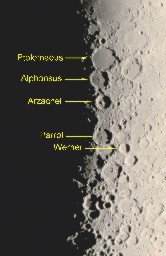
The Moon: by Richard Heggie |
Date Taken: 9 May 2003, Where: Sydney. The image was captured at 18:26:56 Sydney Time on Friday 9 May 2003 using a 12" Meade LX200GPS SCT and Canon 10D at prime focus (3072x2048 pixels at ISO 200 and 1/20 s). The best of twenty images was selected, cropped in ImagesPlus and sharpened using Lucy-Richardson adaptive deconvolution 40 iterations with 9x9 Gaussian Point Spread Function. Histogram adjustment was applied to improve brightness and contrast. |
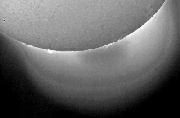
Transit of Mercury, 7 May, 2003: by Jose Ribeiro |
Date Taken: 7 May 2003, Where: Lisbon with a Takahashi fluorite, a 60mm Coronado H-alpha filter and a Mintron video camera. The composition was processed with IRIS and Corel Photopaint. |
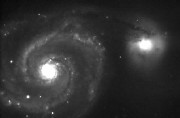
Messier 51, the Whirlpool Galaxy: by Russ Pinizzotto |
Date Taken: 25 April 2003, Where: Bearcat Observatory, Northwest Missouri State University, Maryville, MO USA Scope: C14 Celestron 14" SCT at f6.3 Camera: SBIG ST-7XE Paramount ME Exposure: 30 x 30 sec stacked |
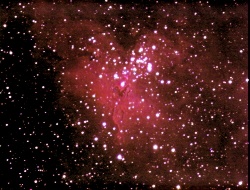
M16 (NGC6611) in Serpens Caudia: by Dick Adduci |
Date Taken: August 16, 2002. Scope: 94mm Branson APO@f/7.0 Camera: Starlight Expess MX7C Exposure: 25 minute integration. |
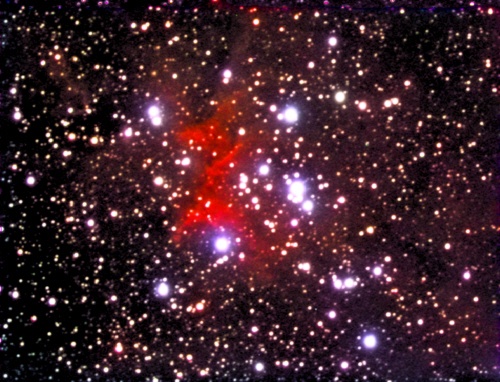
Melotte 15 Open Cluster with Nebulosity in Cassiopeia: by Dick Adduci |
Date Taken: Dec. 9, 2001 Scope: 94mm Brandon APO Refractor at f/7.0. Camera: Starlight Express MX7C. Exposure: 20 minute integration. |
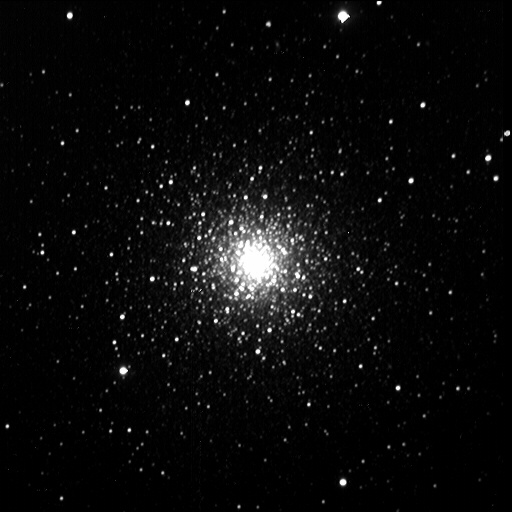
M3, globular cluster found in Canes Venatici: by Jim Peterson |
Date Taken: 1/31/2003 Location: New Mexico Equipment: 14" Celestron SCT at F11 with a Sofware Bisque Paramount ME and an Apogee CCD camera with an RBG filterwheel. |
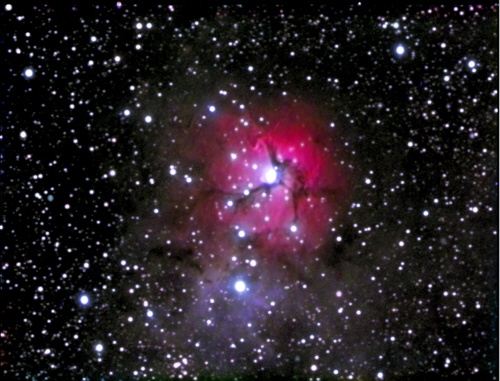
M20 (NGC6514) The Trifid Nebula in Sagittarius: by Dick Adduci |
Date Taken: July 13, 2002. Scope: 94mm Brandon APO Refractor at f/7.0. Camera: Starlight Express MX7C. Exposure: 25 minute integration. |
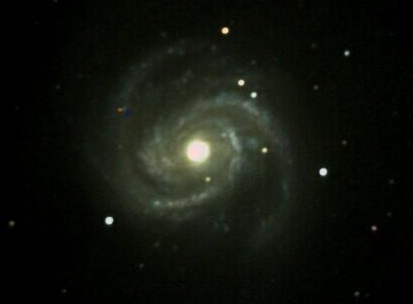
M 100 /NGC 4321, Spiral Galaxy, type Sc, Magnitude: 9.3: by Matt Oltersdorf |
Takahashi Mewlon 300, 3572 mm focal length @ F/11.9, CCD Camera: FLI Dream Machine; Observatory Location: Lat: N31 55 42, Long: W110 04 24, Elevation: 1510 Meters |
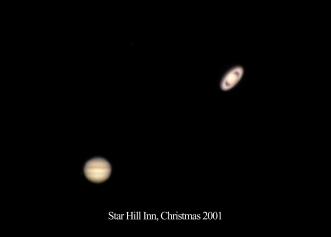
Pas de deux: Jupiter and Saturn, by Steve Thompson |
Nikon Coolpix camera, Star Hill, Sangre DeCristo Mountains near Las Vegas, New Mexico: Christmas 2001 |
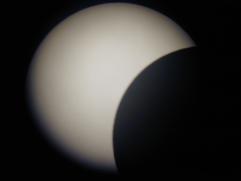
Partial Solar Eclipse, by Jim Peterson |
Olympus digital camera through my Celestron 8" SCT with a 26 mm lens, Seattle |
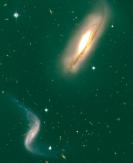
Hickson Compact Group 44 by Duncan Forbes (Swinburne) and Ale Terlevich |
True colour image made from B,R,I exposures, Wide Field Imager, Isaac Newton Telescope. |
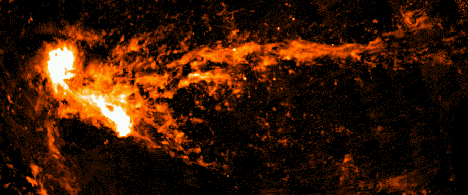
Magellanic Stream by Mary Putman (Center for Astrophysics and Space Astronomy, University of Colorado) and Brad Gibson (Swinburne) |
Neutral hydrogen map of the Magellanic Stream (with velocities between -400 and +400 km/s) from the HI Parkes All-Sky Survey (HIPASS). The Large and Small Magellanic Clouds (LMC and SMC) are on the left, with trailing hydrogen gas (Magellanic Stream) pointing to the right, emanating from the SMC. The Magellanic Stream stretches more than a third of the way around the sky as seen from Earth. |

Jupiter (RGB combined), by Matt Oltersdorf |
SBIG ST-7 CCD with CFW-8 color filter wheel, Meade 10" SCT/ Super wedge Medina, Ohio September 26, 1999 13 mm eyepiece projection (magnification = 192x) |
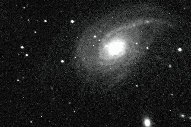
NGC 772, by Matt Oltersdorf |
SBIG ST-7 CCD with CFW-8 color filter wheel Meade 16" SCT Kitt Peak, Arizona November 1997 |

Saturn being occulted by the Moon, by Dennis Carter |
The picture was taken at 4:50AM local time on 9/10/01 in the San Francisco Bay area. I used a Meade LX90 8"SCT with an SBIG 10E camera. The exposure was .15 seconds using a lunar filter. Photoshop was used for processing including brightness enhancement of Saturn. |
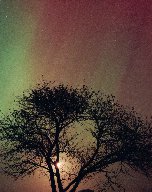
Waning Hunter's Moon in Aurora, by Andy Munro |
2 second unguided exposure Fuji Superia 800, Nikon F2, Nikkor 50 mm @ f 2.0 Negative scanned at 300 dpi Color balanced and filtered in Adobe Photoshop Taken November 5, 2001, Mechanicsville Iowa, USA. |

The Pleiades, by Andy Munro |
One 3-minute and Two 2-minute piggyback exposures Fuji Superia 400, Nikon F2, Nikkor 135 mm @ f 5.6 negative scanned at 300 dpi Stacked, cropped, color balanced and filtered in Adobe Photoshop. Taken November 10, 2001, Mechanicsville Iowa, USA. |
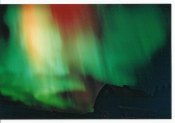
Borealis on Barn, by Steven Marks |
This picture was taken at my small farm outside Red Deer, Alberta, Canada. It was taken on Oct. 28/2001, at 4:00am local time with a 35mm,f/3.2, 7sec., 200spd film, looking NW. I live about 15km away from the glare of the city lights so it is usually quite dark here. |

Orion, by Steven Marks |
This picture was taken at my small farm outside Red Deer, Alberta, Canada. It was taken on Oct. 28/2001, at 4:00am local time with a 35mm,f/3.2, 14sec., 200spd film. It has Jupiter over Orion's right shoulder and Saturn in the red glow above Taurus. |






